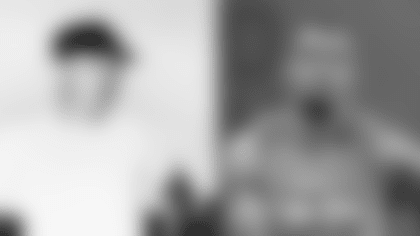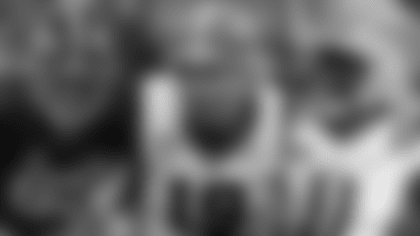As the NFL convenes this week in Indianapolis for the annual scouting combine, Bengals director of player of personnel Duke Tobin's Mobile Manifesto indicates they are thinking big (men) when it comes to the draft.
And make no mistake.
The draft remains the lifeblood of this club even though free agency has been fruitful for the Bengals in the decade of the 2020s. Especially now with quarterback Joe Burrow owning a record deal and wide receiver Tee Higgins now a $21.8 million franchise player.
Obtaining free agents just got tougher, but even with the Trey Hendricksons and Orlando Brown Jr.s, the Bengals have been one of their most successful at grooming their own. According to Elias, at the end of the season the Bengals' roster had the third most drafted players with 31, behind Green Bay (33) and the Rams (32).
(And since 2021, they have the NFL's fifth most regular-season wins with 31, more than the Packers and Rams.)
"You have to hit on your draft picks. That's what makes a good team," said Tobin while scouting last month's Senior Bowl in Mobile, Ala. "Year in and year out you can't buy yourself a good team every year. There's not enough money to do it."
WIDE-OPEN AT WIDE-OUT: Monday's franchising of Higgins probably takes wide receiver off the board in the first round.
Right?
Is wide receiver ever off the board in the Age of Burrow?
Tobin recalled in Mobile how well they've drafted wide receivers no matter who the quarterback has been.
"Wide receiver is a position that we've been pretty successful finding. Early in the draft, the middle rounds, and late rounds," Tobin said.
Just look at the 25 drafts Tobin has been in the building. Three-time Pro Bowler Ja'Marr Chase came with the fifth pick. Higgins arrived with the first pick in the second round. Slot receiver Tyler Boyd came late in the second round and is fourth on the Bengals all-time receptions list. The man he passed on the list, T.J. Houshmandzadeh, is a seventh-round pick. Of the two receivers they drafted last year on the last day, sixth-rounder Andrei Iosivas bolted into the picture with four touchdown catches and has to be in the mix as the third receiver if Boyd isn't re-signed.
"There's a lot of them. A million of them," Tobin said. "You just have to pick the right one and we think we've identified the right ones so far."
Wide receiver? Look alive in any round.
INSIDE STUFF: Tobin and head coach Zac Taylor meet the local and national media Tuesday in Indy. The news of the week has already broken with Higgins getting franchised and don't look for them to add any more when it comes to such topics as Joe Mixon, Brock Bowers, needs, extensions, and other housekeeping.
But Tobin is making it clear that both lines, particularly defensive tackle, are important. With Pro Bowl-like nose tackle DJ Reader not under contract, he knows depth is needed inside.
As opposed to edge, where Pro Bowl sacker Trey Hendrickson, defensive dean Sam Hubbard, versatile vet Cam Sample, and last year's first-round pick Myles Murphy roam. Tobin also said he expects defensive end Joseph Ossai to come on with more snaps.
"You always need guys to roll through there. We rolled through guys that had some good moments and are still young in their career," Tobin said in Mobile. "They could develop. Could we add to that group? Yeah, we can always add to that group.
"You're always looking for pass rush from the interior guys. And whether you get it in the form of a big guy that pushes the pocket or you get in the form of a quick guy that beats the guard. But you need an interior pass rush to supplement what Trey and Sam and Ossai and Myles will be doing on the outside. It's important to us. We'll see."
Check out the best photos of current Bengals during their time at the NFL Combine.

Nebraska defensive back Cam Taylor-Britt runs a drill during the NFL football scouting combine, Sunday, March 6, 2022, in Indianapolis. (AP Photo/Darron Cummings)
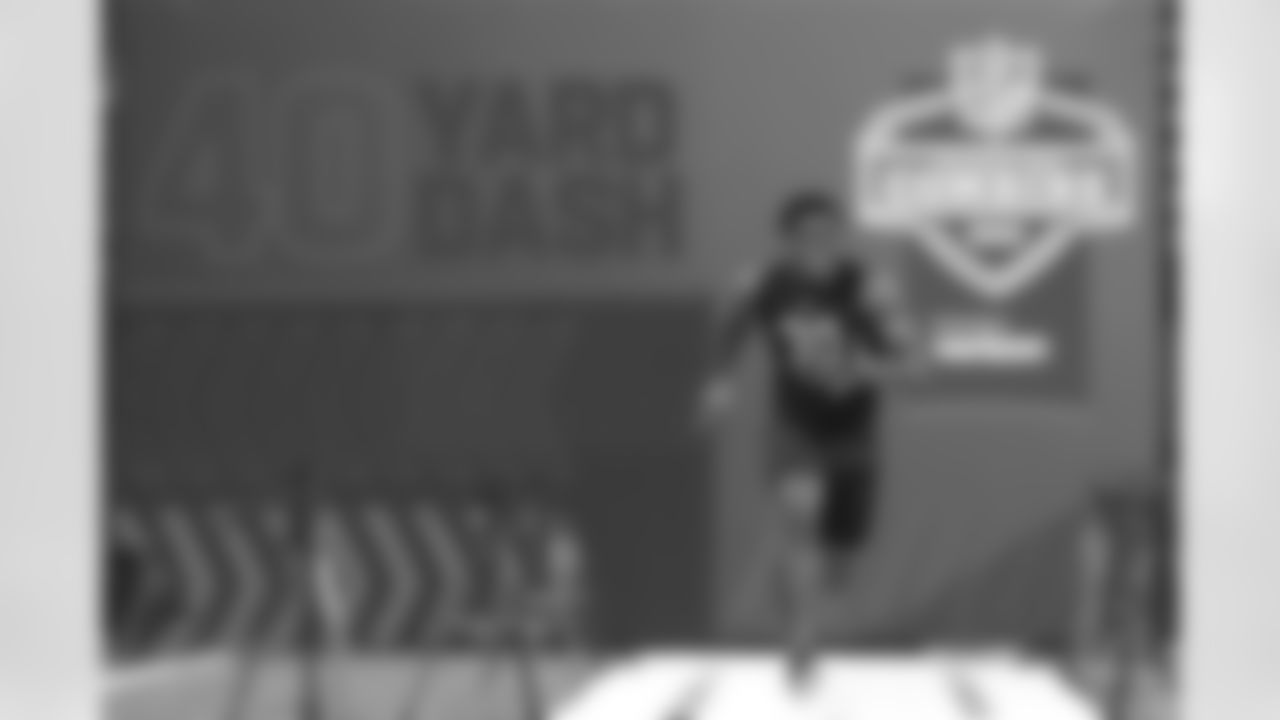
Nebraska defensive back Cam Taylor-Britt runs the 40-yard dash during the NFL football scouting combine, Sunday, March 6, 2022, in Indianapolis. (AP Photo/Darron Cummings)
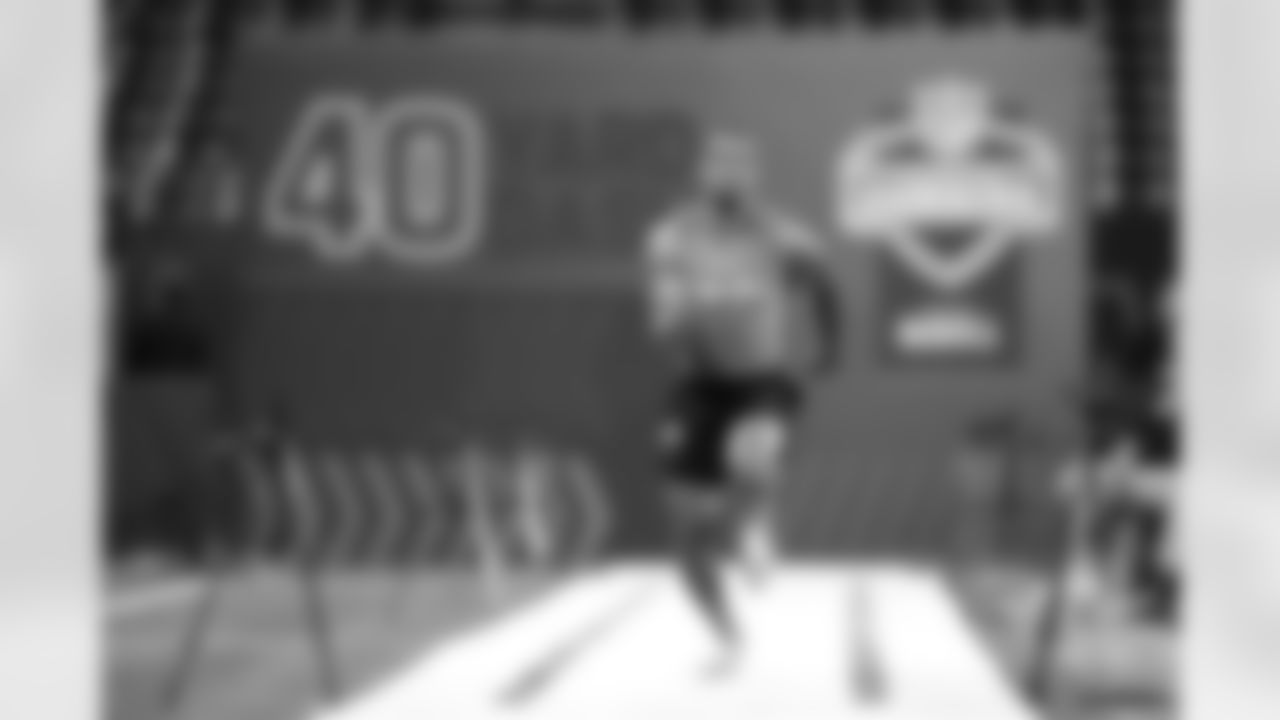
Michigan defensive back DJ Turner II runs the 40-yard dash at the NFL football scouting combine in Indianapolis, Friday, March 3, 2023. (AP Photo/Michael Conroy)
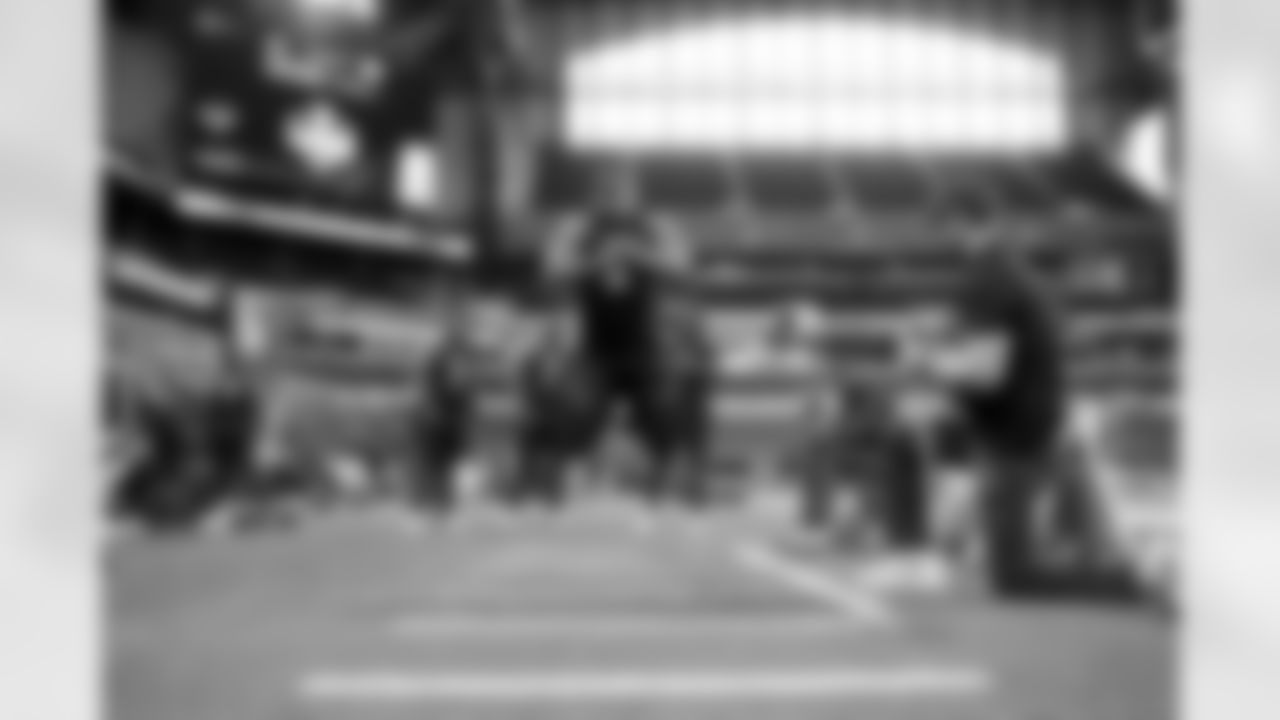
North Carolina State defensive lineman B.J. Hill is seen at the 2018 NFL Scouting Combine on Sunday, March 4, 2018, in Indianapolis. (AP Photo/Gregory Payan)

Ohio State defensive lineman Sam Hubbard runs a drill at the NFL football scouting combine in Indianapolis, Sunday, March 4, 2018. (AP Photo/Michael Conroy)

Ohio State defensive lineman Sam Hubbard runs a drill at the NFL football scouting combine in Indianapolis, Sunday, March 4, 2018. (AP Photo/Michael Conroy)

Ohio State defensive lineman Sam Hubbard runs a drill at the NFL football scouting combine in Indianapolis, Sunday, March 4, 2018. (AP Photo/Michael Conroy)

Oklahoma offensive lineman Orlando Brown participates in the vertical jump during the 2018 NFL Scouting Combine on Friday, March 2, 2018 in Indianapolis. (Ben Liebenberg via AP)
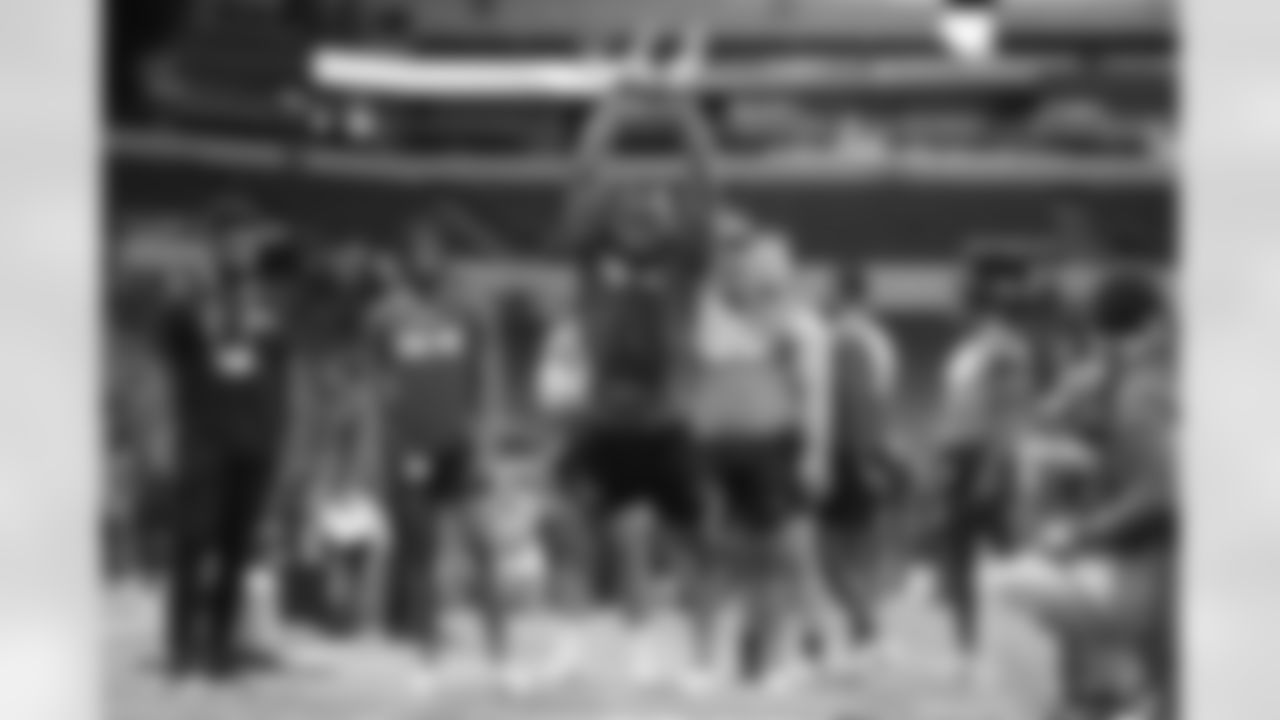
Michigan defensive back DJ Turner II runs a drill at the NFL football scouting combine in Indianapolis, Friday, March 3, 2023. (AP Photo/Darron Cummings)
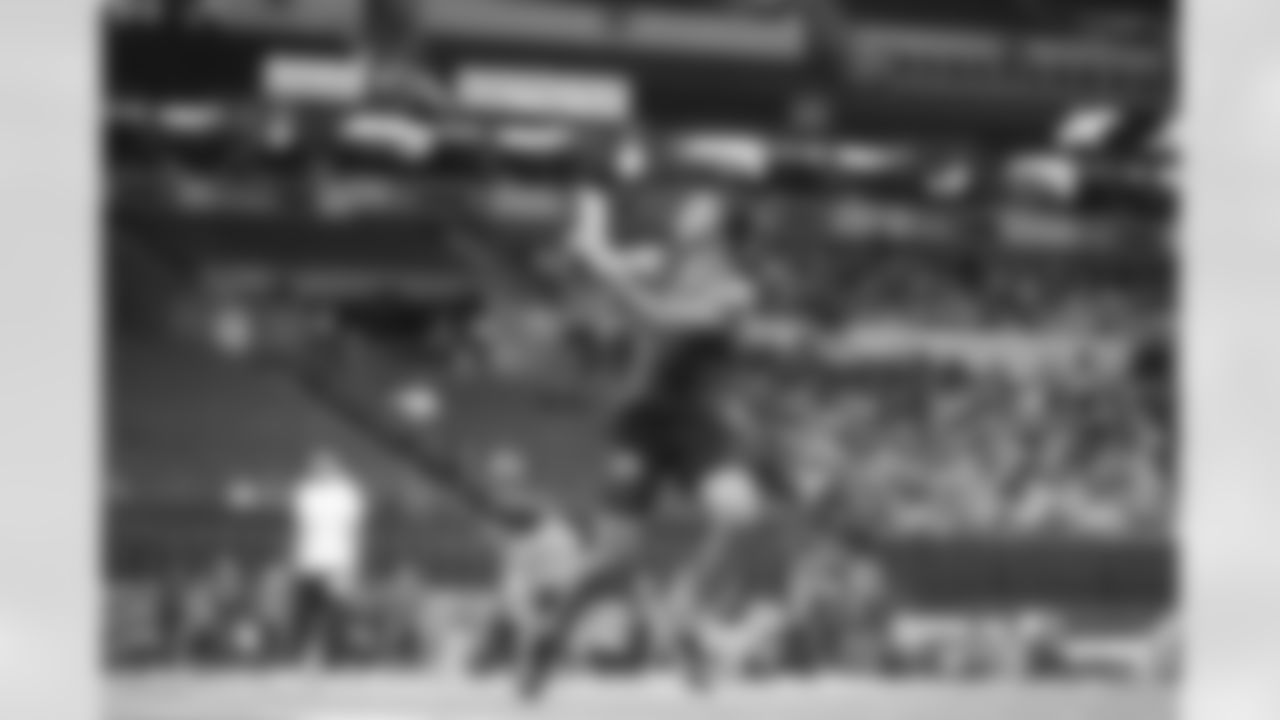
Princeton wide receiver Andrei Iosivas runs a drill at the NFL football scouting combine in Indianapolis, Saturday, March 4, 2023. (AP Photo/Michael Conroy)
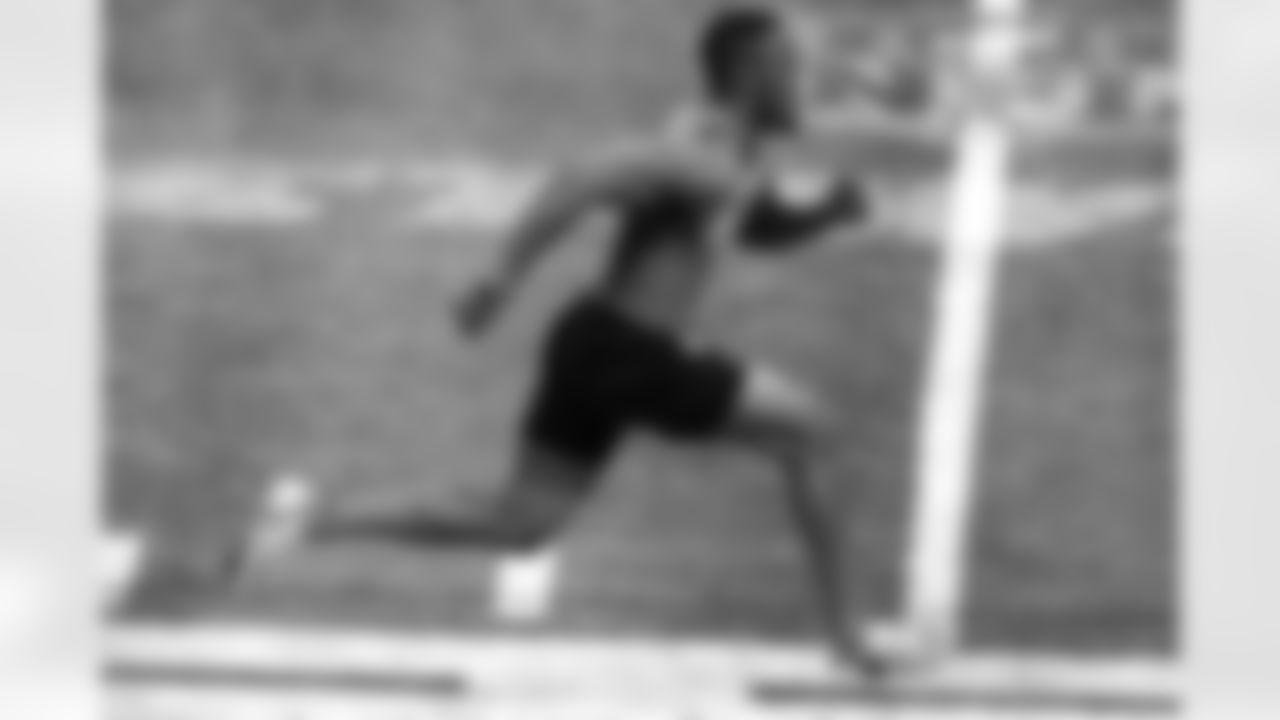
Michigan defensive back DJ Turner II runs the 40-yard dash at the NFL football scouting combine, Friday, March 3, 2023, in Indianapolis. (AP Photo Erin Hooley)

Oklahoma offensive lineman Orlando Brown participates in the 40-yard dash at the 2018 NFL Scouting Combine on Friday, March 2, 2018, in Indianapolis. (AP Photo/Gregory Payan)
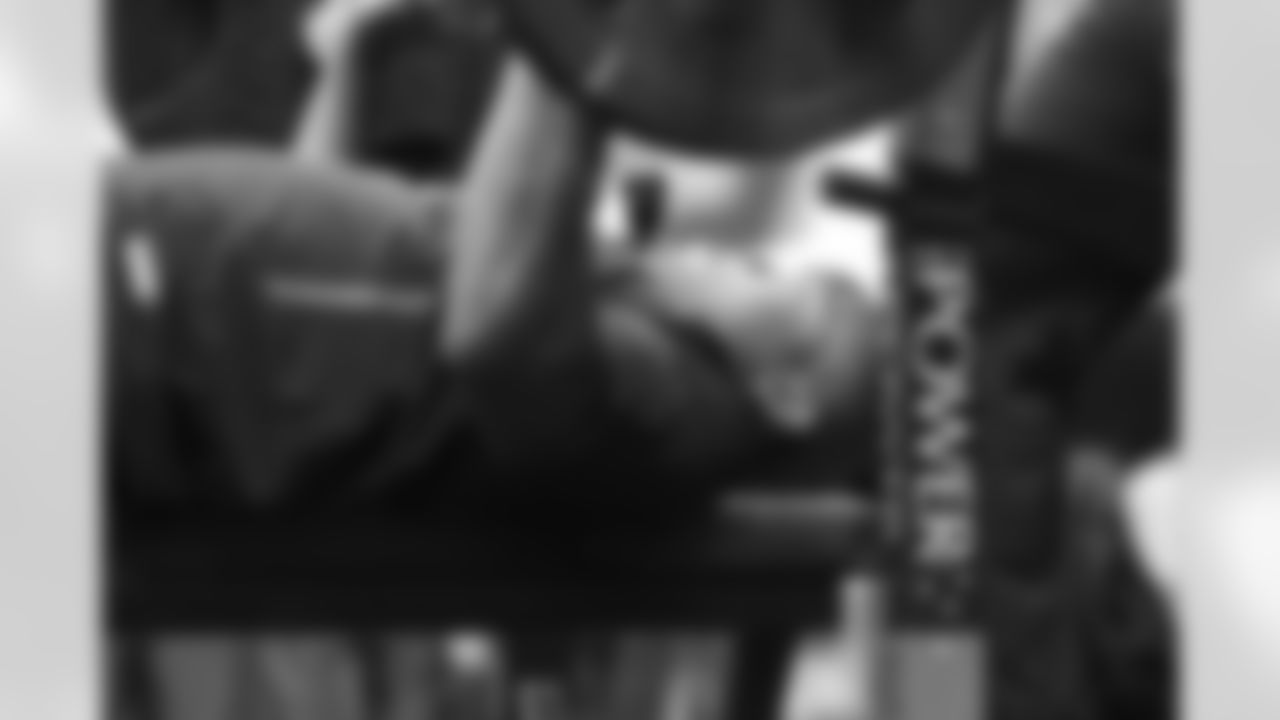
Oklahoma offensive lineman Orlando Brown competes in the bench press at the 2018 NFL football scouting combine Thursday, March 1, 2018, in Indianapolis. (AP Photo/Gregory Payan)

Oklahoma offensive lineman Orlando Brown looks on during the 2018 NFL Scouting Combine on Friday, March 2, 2018 in Indianapolis. (Ben Liebenberg via AP)

Oklahoma offensive lineman Orlando Brown runs a drill at the NFL football scouting combine in Indianapolis, Friday, March 2, 2018. (AP Photo/Michael Conroy)
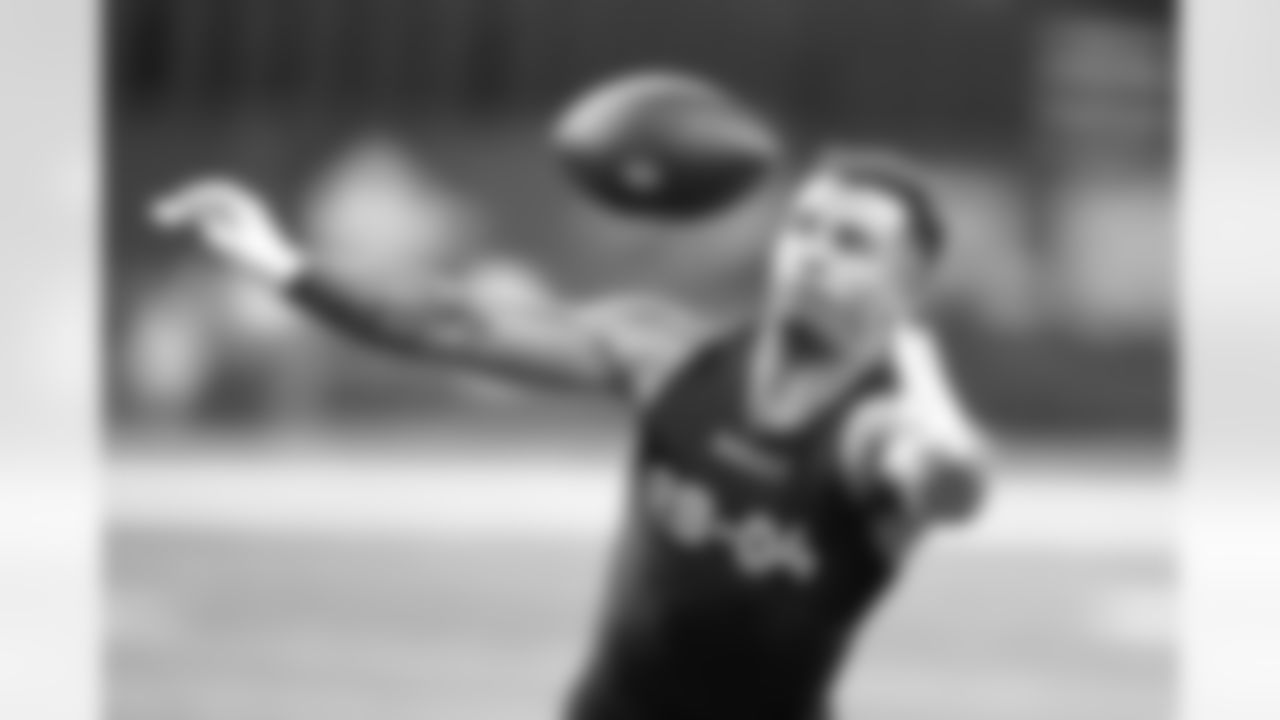
Illinois running back Chase Brown runs a drill at the NFL football scouting combine in Indianapolis, Sunday, March 5, 2023. (AP Photo/Darron Cummings)

North Carolina State defensive lineman B.J. Hill runs the 40-yard dash during the 2018 NFL Scouting Combine on Sunday, March 4, 2018 in Indianapolis. (Ben Liebenberg via AP)
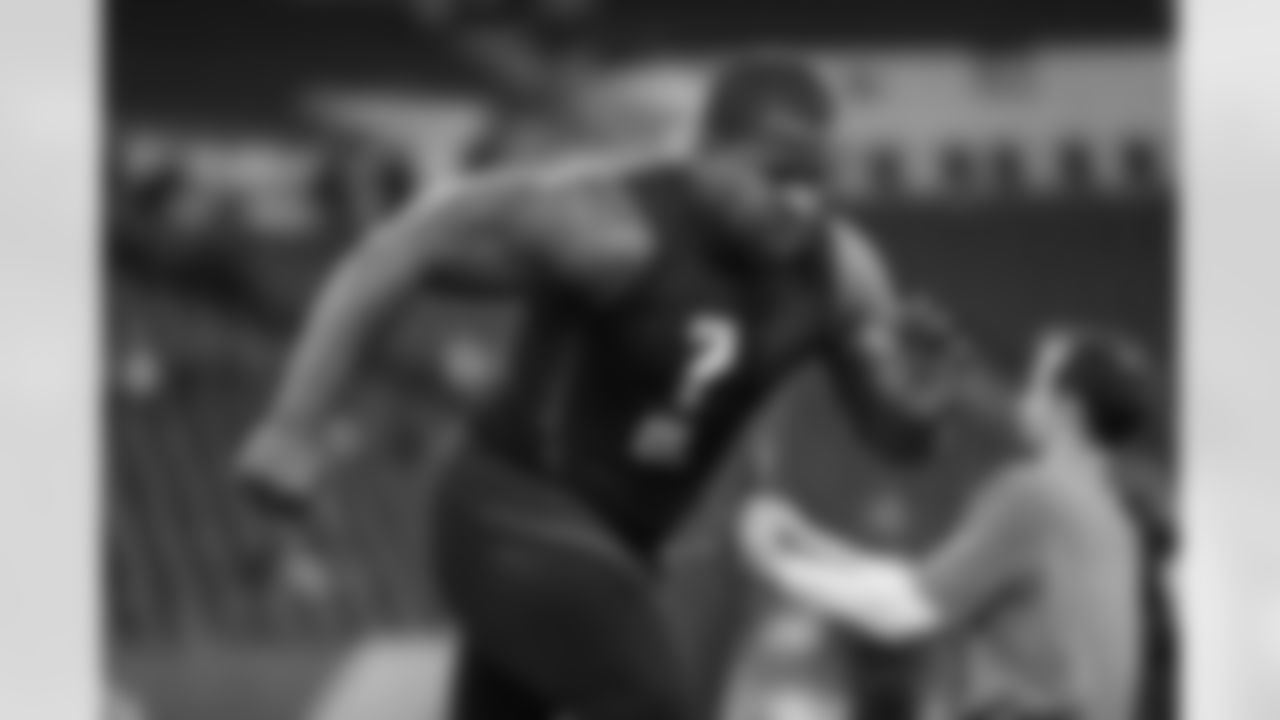
North Carolina State defensive lineman B.J. Hill runs a drill during the 2018 NFL Scouting Combine on Sunday, March 4, 2018 in Indianapolis. (Ben Liebenberg via AP)
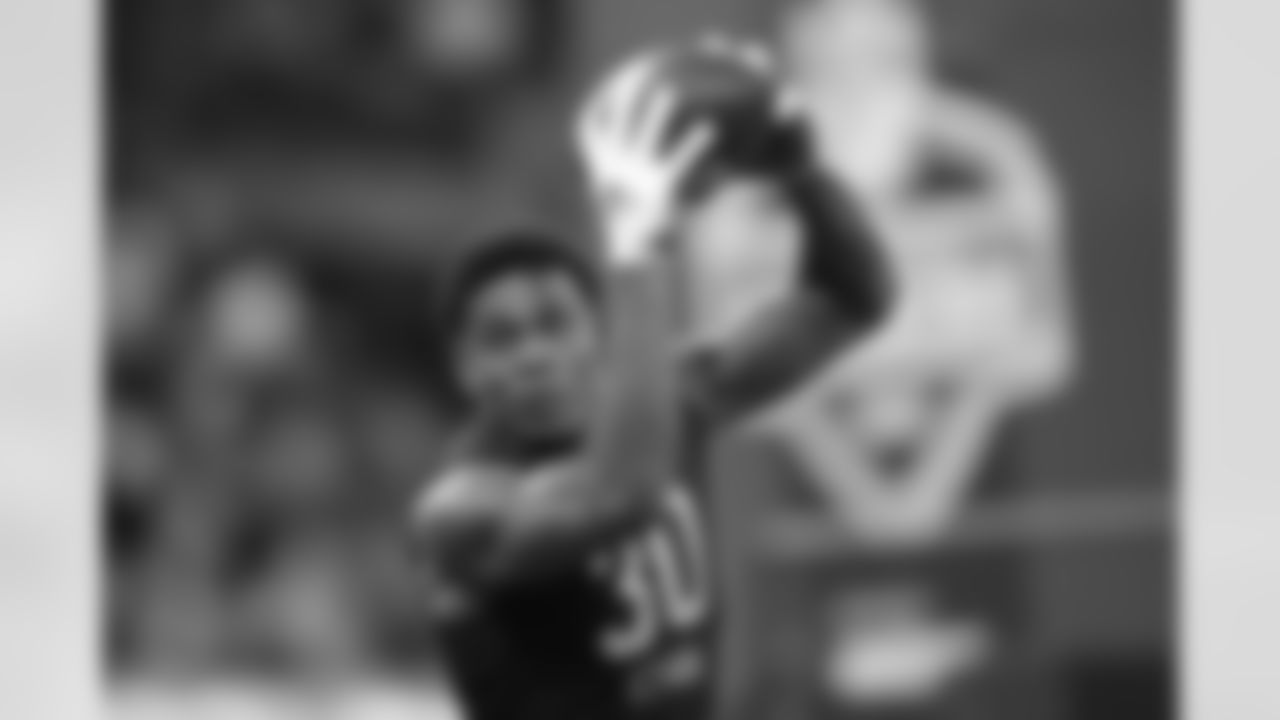
Nebraska defensive back Cam Taylor-Britt participates in a drill at the NFL football scouting combine, Sunday, March 6, 2022, in Indianapolis. (AP Photo/Charlie Neibergall)
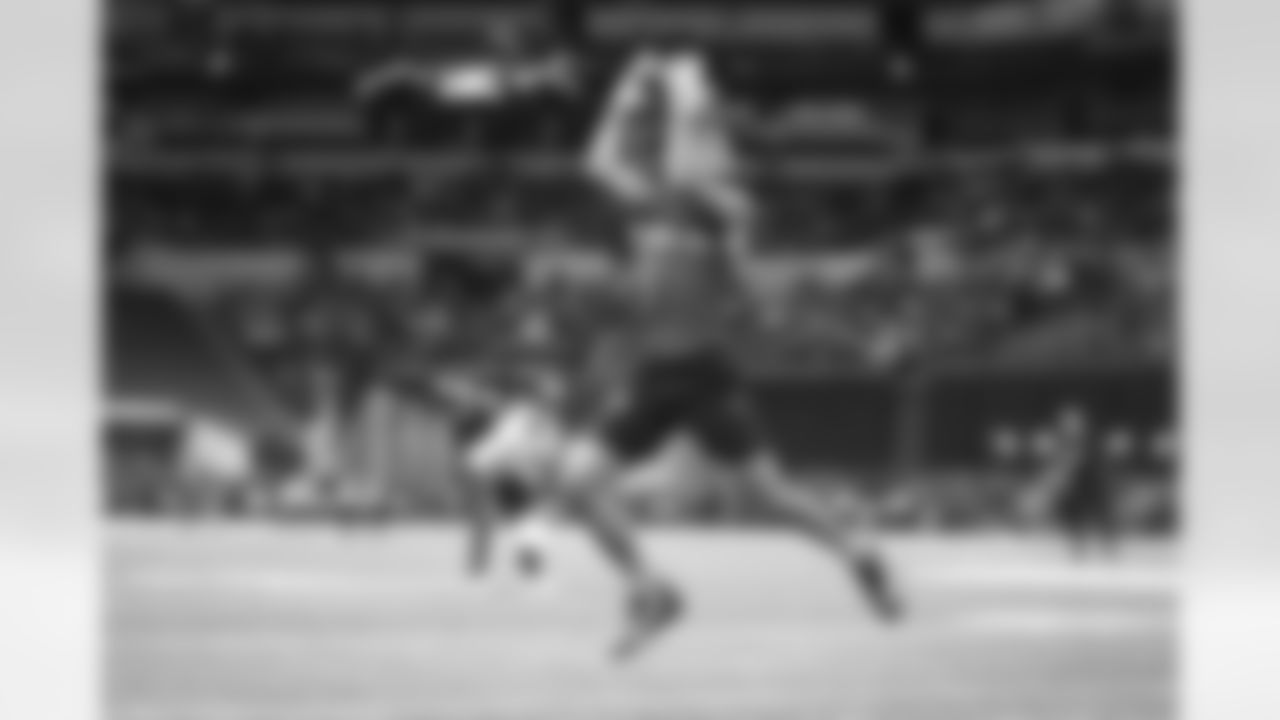
Princeton wide receiver Andrei Iosivas runs a drill at the NFL football scouting combine in Indianapolis, Saturday, March 4, 2023. (AP Photo/Michael Conroy)

Illinois running back Chase Brown runs a drill at the NFL football scouting combine in Indianapolis, Sunday, March 5, 2023. (AP Photo/Darron Cummings)

Princeton wide receiver Andrei Iosivas poses for a portrait at the NFL football Combine on Sunday, March 5, 2023 in Indianapolis. (AJ Mast/AP Images for the NFL)
O-TACKLE: With right tackle Jonah Williams not under contract, the working assumption is they'll take at a tackle to replace him at No. 18 in the first round.
But when is the last time a rookie tackle came in and started Opening Day? If three-time Pro Football Hall of Fame finalist Willie Anderson didn't do it in 1996, it's been a while.
That had been the plan for Williams, when he was drafted in the first round in 2019, but he suffered a season-ending shoulder injury right after the draft. As college offenses keep getting spread out, tackles don't exactly have the easiest transitions to the NFL game. But Tobin is confident there are rock-ribbed traits suited for any era.
Size. Feet. Makeup.
"Perhaps the ball is out in college a little more quicker, depending on who you're looking at. Michigan might be an outlier," Tobin said. "There are teams that still play more comparable football for the NFL. It's a wide-open game in college. They run 100 plays and that's a different scenario than running 65 or 70 plays.
"We want the traits and we want the intangibles. And so we're really focused on trying to really get to the root of what makes a guy tick and how much he loves the game. It hasn't changed. Every team is looking for the same thing, but you want guys with the intangibles to grind. And you want guys who are into the group. it's not an individualistic position … It's five acting as one and if they act that way off the field, they're not going to suddenly act that way on the field."
ZOOM SEASON: Much will be said this week about the 45 interviews that last 18 minutes and they are important. When the Bengals left last year's meeting with Alabama safety Jordan Battle, they knew they wanted him if they could get him. And they not only took Battle in the third round, he became their Rookie of the Year.
But there's more to it than that. Next week, after the combine and until the week of the draft, teams can do up to three one-hour Zooms with prospects. Scout Christian Sarkisian is in charge of the bookkeeping and there's no doubt who on staff conducts the most Zooms.
"I'm probably the leader in the clubhouse," says senior defensive assistant Mark Duffner of his search on the edge for outside linebackers and defensive ends.
But since only about a third of those edge prospects are in Indy this week, the Zooms and campus pro days are huge for personal interviews of the non-combine guys, as well as potential undrafted free agents.

2024 NFL Combine
The Bengals source of news, interviews and more at the 2024 NFL Combine.
COMBINE OF TROY: Bengals wide receivers coach Troy Walters has no problem remembering his combine coming out of Stanford in 2000 and it's certainly not a whiff of nostalgia. But it did jolt him into the league with a vow.
When he stood up against the yardstick during the weigh-in and heard the announcement of his weight, something like "5-6-0-3-4," he heard giggling.
Here was Walters (listed as 5-7 in today's Pro Football Reference), the Biletnikoff Award winner as 1999's best receiver in the country, and there were giggles.
"I always remember that," Walters says. "Giggling in the back. You don't gain any inches in Indy. I had a chip on my shoulder. 'I can prove I can play in this league.'"
Eight years, 102 catches, and nine touchdowns later, he did. Now he's a guy sitting in the combine crowd jotting down the numbers bellowed from the stage.
"As scouts, coaches, and evaluators, you have to be special if you're shorter," Walters says. "You have to bring different qualities than other guys. You have to find a way. I was going to find a way."
The Vikings apparently stifled a giggle and took Walters in the fifth round. He wasn't a top guy. The Bengals, we know, made Florida State's Peter Warrick the first receiver off the board that year with the fourth pick. But Walters had enough of those special qualities to draft despite his size.
Great college production. Son of a long-time NFL defensive assistant coach with top football IQ. Punt return ability. And, he thinks, in Indy he set the combine record at that time for the short shuttle at 3.84 seconds. The record is 3.81, set in 2006 by Jason Allen, the Tennessee cornerback and safety who finished his career in Cincinnati.
"That's what I was good at," Walters says. "Change of direction. Short area quickness. I didn't have to train much for that one."
40 FUN: Walters didn't run his 40-yard dash at the RCA Dome, preferring the fast track of Stanford a few weeks later at his pro day.
But then, mostly everybody did. Back then.
"It was only old Astroturf and a softer surface. Times weren't as fast as they are now. Guys would wait and run at their pro day," Walters says. "Now, most of the guys run at (Lucas Oil Stadium). Now a 4.3 (seconds) is typical. Back then, it was an eye-opener. Now it's a 4.2. There weren't many 4.3s and if you ran a 4.4, you were blazing. I think the surface may be a little better for them."
Walters says he clocked anywhere between 4.37 and 4.44 when he ran his two in Palo Alto, one against the wind and one with it.
Bengals tight ends coach James Casey, who came out of Rice to participate in the 2009 combine, considers the 40 "The Million Dollar Race."
That's what it was back then. Now, he says, the difference between a 4.45 and 4.3 could be $10 million. Either way, his advice is to loosen up. The famously meticulous Casey says he was too much so.
"I put a lot of thought into it. What shorts do I wear? What shoes do I wear? Looking back on it, I kind of overthought it. I tensed up. I was just trying too hard," says Casey, who ended up wearing light soccer shoes.
"I was not a proven tight end. In college, I did a lot of different stuff, so I knew a team that was going to take make me was going to be creative, use me as a fullback, split me out, some, route running. Speed would be crucial for me. I ran a good time for my size, but it could have been faster."
Listed at 248 pounds, he ran fastest at his pro day in Houston at 4.69, compared to 4.74 in Indy. The Texans took him in the fifth round, a tribute to Casey since he had already been drafted by the White Sox and pitched in three seasons of minor-league baseball. He says what really hurt his draft stock was his arm length. It's not recorded and it's his only stat he can't remember from his Indy.
"Too short to take on those long defensive ends," says Casey, who still played 95 games and five more in the playoffs during seven seasons.
But he does remember he had pretty solid times in the drills. Except the guy in line after him, South Carolina's Jared Cook, blew past all the tight ends on his way to being a third-round pick and a 13-year career.
"It was alphabetical. I'm James Casey and did a 36-inch vertical and I'm feeling pretty good," Casey says. "The next guy is Jared Cook. Who was a freak. He verticals. 41."
More Casey advice. Worthy of a Rice student, he racked up an impressive 35 out of 50 on the Wonderlic intelligence test. But it could have been more.
"I thought they said stop and there was something like two minutes left," Casey says. "I just should have kept going."
MORE THEN AND NOW: Both Walters and Casey say the biggest difference between the combine then and now is how they spread out the schedule for the prospects. What used to be a three-day trial of physicals, drills, tests, interviews, and media is now a five-day deal.
"Biggest job interview in the world. The whole experience was great, but I'd never want to do it again," Casey says. "It was a relief when it was over. I got back on the plane and said, 'What just happened?'
"More player-friendly now," Casey says.
Walters, rehabbing surgery for a broken hand, says he left Indy more sore then when he arrived after the doctors got done poking and prodding. He also remembers how the interview process with teams was grab-and-go instead of by an appointment.
"I wasn't one of the higher-rated guys, so I didn't have people pulling on me," Walters says. "They knew who we were because we had (identifying T-Shirt numbers), but you just had to be ready and that wasn't really a problem for me."





